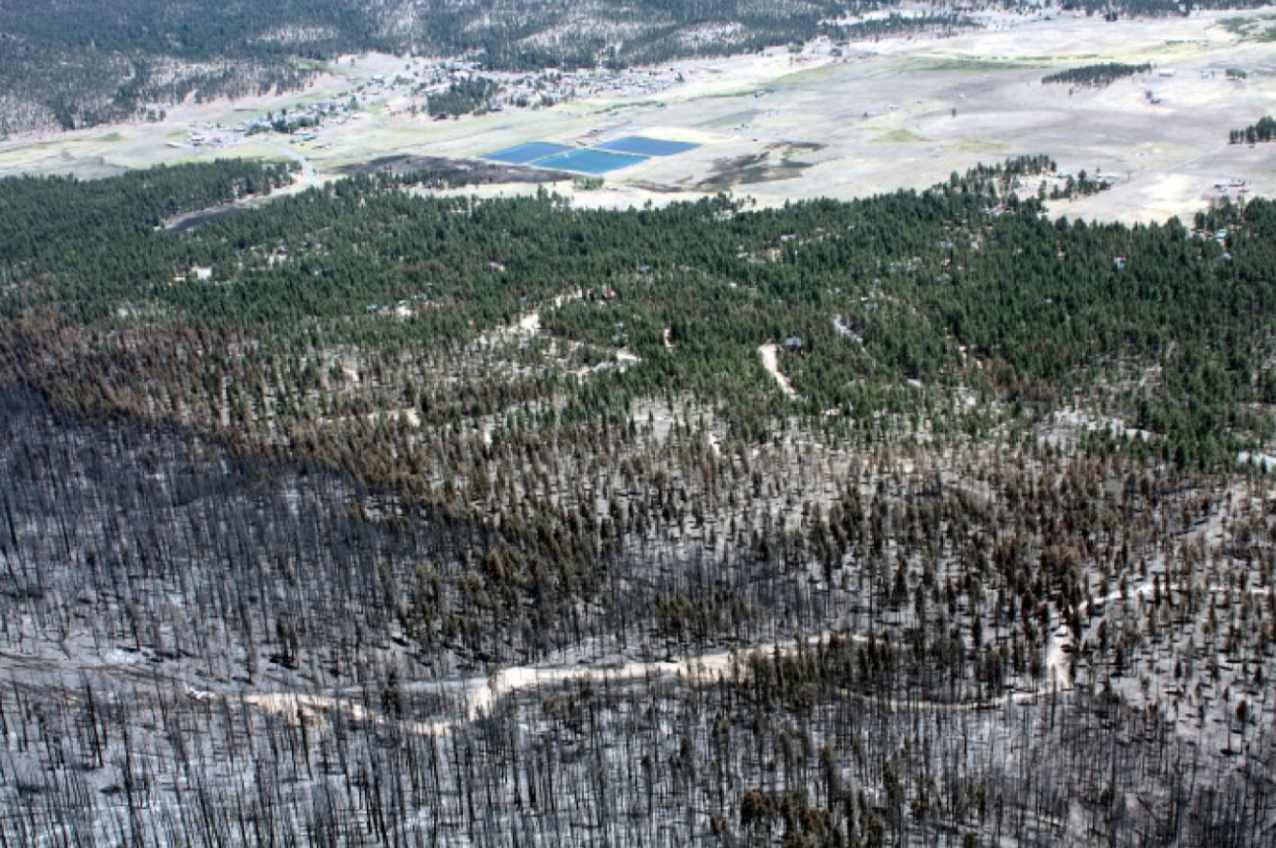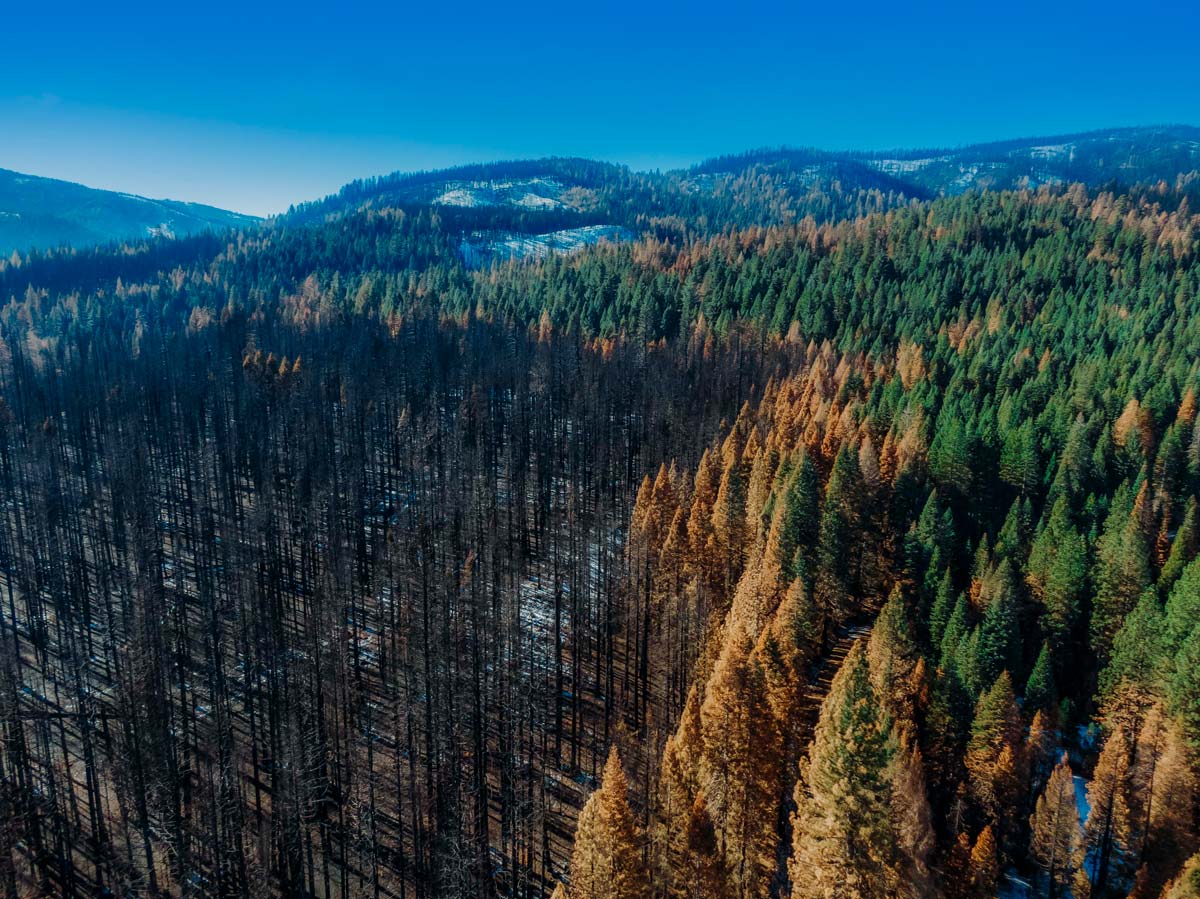This is an interesting story because it’s in Grist, and there are some great photos. It’s interesting to reflect on different researchers and what they use as evidence to support their conclusions, and how broadly they think they apply
“We have overwhelming evidence that when we treat forests by removing fuels, it generally — not always, you can never say always, but generally — moderates fire behavior,” said Maureen Kennedy, a professor who studies forest fires at the University of Washington, Tacoma.
Kennedy studied a similar situation as the one unfolding in the Sycan Marsh, following the 2011 Wallow Fire in Arizona. She looked closely at the places where people had thinned the forest around two small towns, Alpine and Greer, preparation that probably saved them. Forest treatments like this work by spacing out fuel, Kennedy said. When there is a continuous ladder of branches and small trees from the ground to the canopy, it allows fire to rise up into the treetops. And when trees are close together, fires move from one to the next, growing hotter and hotter. Trees that are farther apart, however, encourage fires to fall to the ground. It makes sense, intuitively, but it’s still surprising when a wall of flame settles down and begins creeping across the forest floor, Kennedy said.
“No matter how many times I study it, no matter how much sense it makes in theory, it’s still amazing,” she said. “When you look at photographs from the Wallow Fire, that landscape was nuked, it was burning so hot that there were only blackened sticks that used to be trees left behind. Then, as you move into the treatment area the trees are brown, and then further in, they are green.”

You can see the same thing in a photo (below) taken after the 2020 North Complex Fire, near Quincy, California. There, too, the fire mellowed when it reached the area where workers had removed fuels, said Hannah Hepner, program manager for the Plumas County Fire Safe Council.

”That aerial photo is pretty incredible, and that is precisely where the fuels treatment took place,” Hepner said. But, she cautioned, these images shouldn’t set expectations too high: Fire behavior is unpredictable, and some areas always burn more severely than others. Just across the street from that photo, she said, the fire continued to blacken trees — though even there, previous forest management allowed firefighters to get down a narrow road and save a wood shingled building.
Not surprising that some areas receiving “treatments” within the perimeter of the Bootleg fire showed reduced fire intensity/severity, as indicated in an area of the Sycan Marsh.
A local news story covering the Bootleg fire points to another area (other than the Marsh) where “treatments” succeeded in reducing fire intensity/severity.
News story photo caption: “A portion of the Black Hills Ecosystem Restoration Project Area, an area where fuels reduction treatments were previously implemented, shows the effects of low-intensity fire and limited damage in the wake of the Bootleg Fire”
“In the vicinity of the advancing flames was the Black Hills Ecosystem Restoration Project area, including the West Spodue prescribed fire project, which was designed in collaboration with the Klamath Tribes and many other cooperators including local landowners.”
“Fire managers designed the roughly 7,000-acre prescribed fire project to help protect the private timber lands and community of Sycan Estates.”
https://ktvz.com/news/oregon-northwest/2021/07/22/fs-fuels-treatment-areas-are-green-islands-in-bootleg-fire-zone/
Yet this same of treatment also failed in protecting a local community (Sycan Estates), as it was designed to do.
“The Bootleg Fire, one of more than 80 active wildfires that have charred about 1.3 million acres in recent weeks, has ravaged the southern Oregon community of Sycan Estates, leaving behind a trail of ash-covered debris.”
https://news.yahoo.com/bootleg-fire-town-finds-nothing-193626402.html
I suggest that a full assessment of the level of success/failure of treatments in the Bootleg fire area be undertaken, and until the results are in that we resist the temptation is draw conclusions based on limited evidence.
One of the articles that you cited had an important cautionary caveat in its conclusion:
“Our results add significantly to the growing evidence that fuel treatments that include removal of surface and ladder fuels in these forest types are highly effective management tools for reducing fire severity and canopy tree mortality. In our opinion, quantitative assessments of fuel treatment effects on fire severity in frequent-fire forest types hardly merit further effort.
Rather, we suggest that future work focus on documenting and comparing other ecological outcomes of fuel treatments in burned and unburned forest, such as effects on plant and animal diversity, soil conditions, and habitat heterogeneity.”
https://www.sciencedirect.com/science/article/abs/pii/S0378112712000898?via%3Dihub
But this headline (one day earlier) could have been “Evidence from the Bootleg Fire supports not thinning forests.”
https://www.ijpr.org/wildfire/2021-07-25/the-bootleg-fire-grew-fast-did-forest-management-play-a-role
“I do think this demonstrates that this kind of focus on removing vegetation from these wildlands, especially far away from human communities, is not doing anything to prevent these fires from becoming very large,” he says.
Past commercial logging and livestock grazing has encouraged wildfires, according to Timothy Ingalsbee, executive director of Firefighters United for Safety, Ethics and Ecology. Ingalsbee, who is an advocate of prescribed burning, notes that when the fire entered the Gearhart Mountain Wilderness, an area with more potential fuel but fewer small trees and flammable grasses, it appears to have burned more slowly.
According to Baker’s analysis, the fire slowed from moving 3.4 miles per day on managed land to 2.1 miles per day in the Gearhart Wilderness.